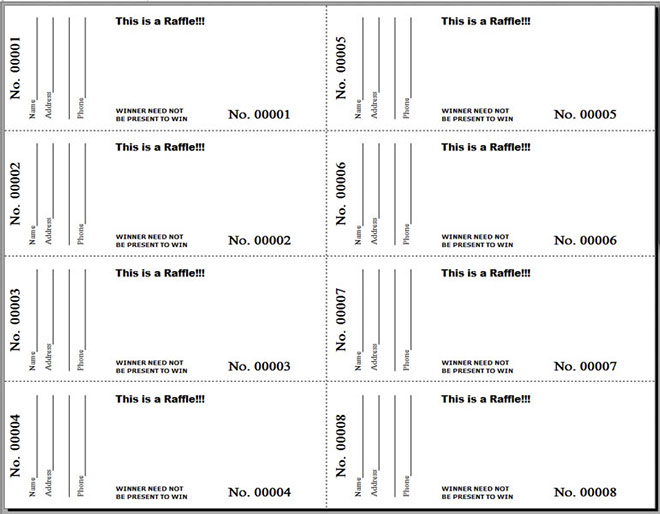Sequential numbering refers to the process of assigning consecutive numbers to a series of items or events in a specific order. This technique is commonly used for organization, identification, tracking, and record-keeping purposes across various fields such as business, manufacturing, administration, and more.
The primary purpose of sequential numbering is to establish a clear and logical sequence for items, making it easier to locate, manage, and reference them. In many cases, sequential numbering is applied to documents, products, invoices, purchase orders, tickets, and other items that require a unique identifier tied to their order of creation or occurrence.
In the business realm, sequential numbering plays a crucial role. For instance, invoices and purchase orders are often assigned sequential numbers to ensure that each transaction is uniquely identifiable. This aids in tracking payments, deliveries, and overall financial records. By maintaining an organized sequence, businesses can quickly retrieve and cross-reference specific transactions, enhancing efficiency and accuracy.
Manufacturing and inventory management also heavily rely on sequential numbering. Each manufactured item or product can be assigned a sequential serial number during production. This facilitates monitoring production processes, quality control, and tracking defects if they arise. Furthermore, in inventory management, sequential numbering simplifies the process of restocking, picking, and fulfilling orders. When products are systematically numbered, warehouses can easily locate items and manage stock levels more effectively.
Sequential numbering is also common in event management and ticketing. Event organizers issue tickets with unique sequential numbers to control access and keep track of attendance. This method prevents counterfeiting and helps organizers monitor the number of attendees. Additionally, in the world of art and collectibles, limited edition items are often sequentially numbered to indicate their rarity and authenticity.
Document control and versioning benefit greatly from sequential numbering. For instance, legal contracts, engineering drawings, and academic papers are often assigned sequential document numbers. This simplifies tracking revisions, updates, and references. In collaborative projects, sequential numbering ensures that each version of a document is chronologically ordered, reducing confusion and potential errors.
In the digital age, sequential numbering has transcended its traditional limitations. With the rise of databases and electronic records, sequential numbering can be automated, reducing the chances of human error. Barcode systems and QR codes are often used to represent sequential numbers digitally, making it easier to scan and retrieve information.
In conclusion, sequential numbering is a foundational concept that brings order and structure to various aspects of our lives. Whether in business, manufacturing, administration, or even personal organization, this technique simplifies the identification, tracking, and retrieval of items or events. By assigning consecutive numbers to items, we create a logical sequence that enhances efficiency, accuracy, and overall organization. With technological advancements, the application of sequential numbering has evolved, making it an indispensable tool for managing information and resources in a wide range of fields.
The primary purpose of sequential numbering is to establish a clear and logical sequence for items, making it easier to locate, manage, and reference them. In many cases, sequential numbering is applied to documents, products, invoices, purchase orders, tickets, and other items that require a unique identifier tied to their order of creation or occurrence.
In the business realm, sequential numbering plays a crucial role. For instance, invoices and purchase orders are often assigned sequential numbers to ensure that each transaction is uniquely identifiable. This aids in tracking payments, deliveries, and overall financial records. By maintaining an organized sequence, businesses can quickly retrieve and cross-reference specific transactions, enhancing efficiency and accuracy.
Manufacturing and inventory management also heavily rely on sequential numbering. Each manufactured item or product can be assigned a sequential serial number during production. This facilitates monitoring production processes, quality control, and tracking defects if they arise. Furthermore, in inventory management, sequential numbering simplifies the process of restocking, picking, and fulfilling orders. When products are systematically numbered, warehouses can easily locate items and manage stock levels more effectively.
Sequential numbering is also common in event management and ticketing. Event organizers issue tickets with unique sequential numbers to control access and keep track of attendance. This method prevents counterfeiting and helps organizers monitor the number of attendees. Additionally, in the world of art and collectibles, limited edition items are often sequentially numbered to indicate their rarity and authenticity.
Document control and versioning benefit greatly from sequential numbering. For instance, legal contracts, engineering drawings, and academic papers are often assigned sequential document numbers. This simplifies tracking revisions, updates, and references. In collaborative projects, sequential numbering ensures that each version of a document is chronologically ordered, reducing confusion and potential errors.
In the digital age, sequential numbering has transcended its traditional limitations. With the rise of databases and electronic records, sequential numbering can be automated, reducing the chances of human error. Barcode systems and QR codes are often used to represent sequential numbers digitally, making it easier to scan and retrieve information.
In conclusion, sequential numbering is a foundational concept that brings order and structure to various aspects of our lives. Whether in business, manufacturing, administration, or even personal organization, this technique simplifies the identification, tracking, and retrieval of items or events. By assigning consecutive numbers to items, we create a logical sequence that enhances efficiency, accuracy, and overall organization. With technological advancements, the application of sequential numbering has evolved, making it an indispensable tool for managing information and resources in a wide range of fields.
Sequential Numbering | Document Numbering
Sequential and Document numbering can be easy to do with desktop publishing software and Number-Pro
Sequential and Document numbering can be easy to do with desktop publishing software and Number-Pro

Sequential numbering can be easily achieved by using Number Pro